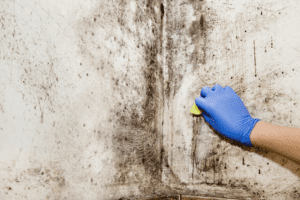
Introduction
Mould is common in rental properties and can cause significant health issues for tenants. Unfortunately, many tenants do not know how to address the issue or what their rights are when it comes to dealing with mould in their rented homes (whether that is through the local authority, housing associations, or private landlords). In this ‘Mould in Rented Property: What Tenants Need to Know’ article, we will discuss everything you need to know as a tenant, including:
- What is mould?
- What are the health risks?
- How can mould damage properties?
- What does mould look like?
- What are the rights and responsibilities of the tenant?
- What preventative action can a tenant take against mould?
- What is the landlord’s responsibility?
- What preventative action can a landlord take against mould?
What is mould?
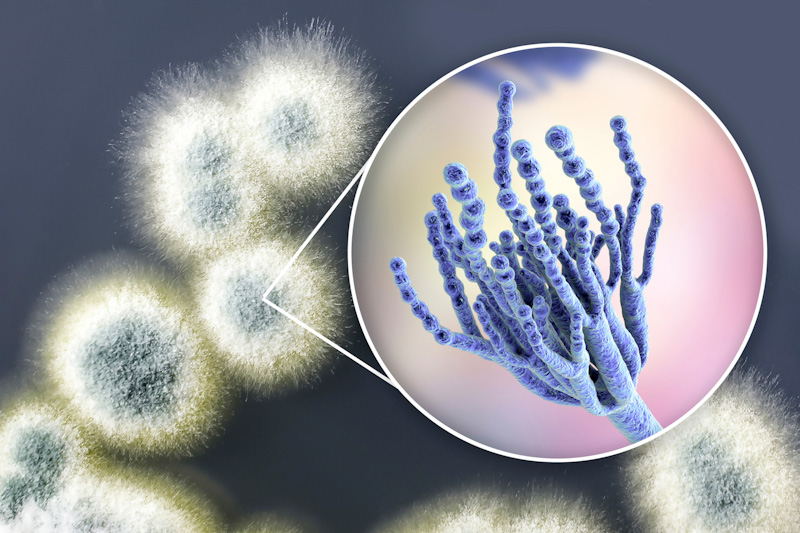
Mould is a type of fungi that grows in warm, moist environments.
It reproduces by releasing spores into the air, which can cause serious health issues for humans when inhaled.
Common causes of mould growth in rental properties include penetrating damp, rising damp, leaks, poor ventilation, poor insulation, and high humidity levels. Perhaps there is something outside blocking ventilation. Mould can often be found on cold surfaces like external walls and window frames.
It’s important to understand that mould can grow in any environment where there is warmth and moisture.
This means that even if you keep your property clean and tidy, mould can still develop if there is a source of moisture. For example, a leaky pipe or a poorly ventilated bathroom can create the ideal conditions for new mould colonies.
Behaviour Can Cause Damp and Mould In Rental Property
Poor behaviour is a common symptom of causing significant mould problems, for example covering air vents, no suitable ventilation systems for a tumble dryer and drying wet clothes can result in damp and mould.
Having no suitable ventilation to remove excess moisture and drying clothes indoors can create extra moisture in rooms that could result in mould problem.
If you suspect that there is mould in your rental property, it’s important to address the issue as soon as possible. Ignoring the problem can lead to serious health issues for you and your family, as well as damage to the property itself.
What are the Health Risks?
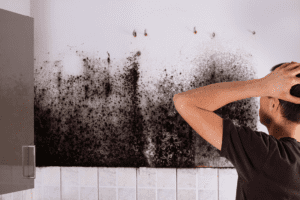
Mould reproduces through spores. Due to their small size, the spores go unnoticed and can float in the air to be carried away by air currents. When they land on a new surface they can start a new mould colony.
Mould exposure can cause a range of health issues, including
- Respiratory infections- these differ from person to person, but they can be severe enough to require medical attention. Additionally, vulnerable populations like children, the elderly, and those with weakened immune systems or pre-existing health conditions are at a higher risk of developing respiratory infections from mould exposure.
- Allergic reactions such as sneezing, coughing, watery eyes, and runny nose.
- skin irritation.
Can dead spores still cause health issues?
While dead mould spores are typically less harmful to humans than live spores, they can still cause health issues for individuals who are sensitive or allergic to mould.
This is because they may still contain allergens that can cause an allergic response.
In fact, some people may even be more sensitive to dead mould spores than live spores since they are more likely to become airborne and spread throughout a building.
Dead mould spores circulating through a property remain therefore a hazard to human habitation.
How can mould damage properties?
In addition to these health risks, mould can also cause damage to the property. It can weaken the structural integrity of walls and ceilings, and can also cause stains and unpleasant odours.
It’s important to note that some materials may need to be replaced rather than cleaned if they have been affected by mould. For example porous materials like drywall, or carpet may need to be replaced if they have been extensively affected by mould.
Take action when you see mould, not only will this help to protect your health, but it will also prevent further damage to the property.
What does mould look like?
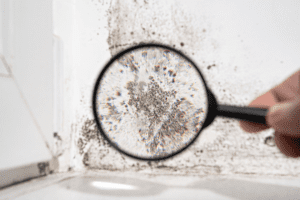
There are many different types of mould, and some are more dangerous than others. Some common types of mould found in rental properties include black mould, green mould, and white mould. It is important to identify the type of mould to determine the appropriate course of action.
black mould
Black mould, for example, is one of the most dangerous types of mould. It can cause serious health issues, including respiratory problems, skin irritation, and even neurological issues.
green mould
Green mould, on the other hand, is less dangerous, but can still cause health issues for individuals with weakened immune systems.
White Mould
Some moulds appear white during their early stages of development, only to change colour after producing spores. Others remain white regardless of their their development stage. White mould has a powdery appearance.
Still unsure if its mould?
If you are unsure about the type of mould in your rental property, it’s important to seek professional help. A qualified mould inspector can identify the type of mould and recommend the appropriate course of action.
What are the rights and responsibilities of the tenant?
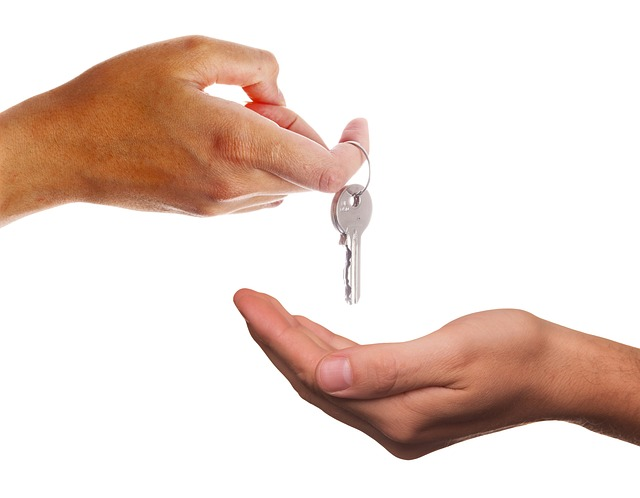
Being a tenant comes with certain rights and responsibilities.
As a tenant, it is important to understand your legal obligations to ensure that you are fulfilling your duties and protecting your rights.
One of the most important responsibilities of a tenant is to keep their rental property clean and well-maintained. This includes taking care of any damp conditions that may arise.
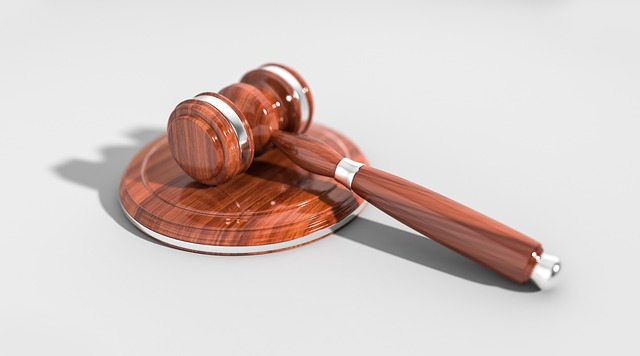
Mould is a common problem in many rental properties, and it can have serious health consequences if left untreated.
As a tenant, you have a legal obligation to report any issues to your landlord or property manager as soon as you become aware of them. Failure to report issues could result in the tenant being held liable for any damages caused by the mould.
In addition to reporting issues, tenants are also responsible for taking steps to hinder mould growth in their rental property. This includes keeping the property clean and dry, using proper ventilation, and reporting any leaks or water damage to the landlord or property manager.
When to Report Mould to Your Landlord

If you notice any signs of mould in your rental property, it is important to report it to your landlord or property manager as soon as possible.
It is important to note that tenants should not attempt to remove mould on their own, as this can be dangerous and may cause the mould to spread.
Instead, tenants should report the issue to their landlord or property manager and allow them to take the necessary steps to address the problem. noticing musty odours, damp spots on walls or ceilings, or visible mould on external walls.
Landlords have a legal obligation to address any mould issues in their rental properties in a timely and appropriate manner.
How to Report Mould to the Landlord
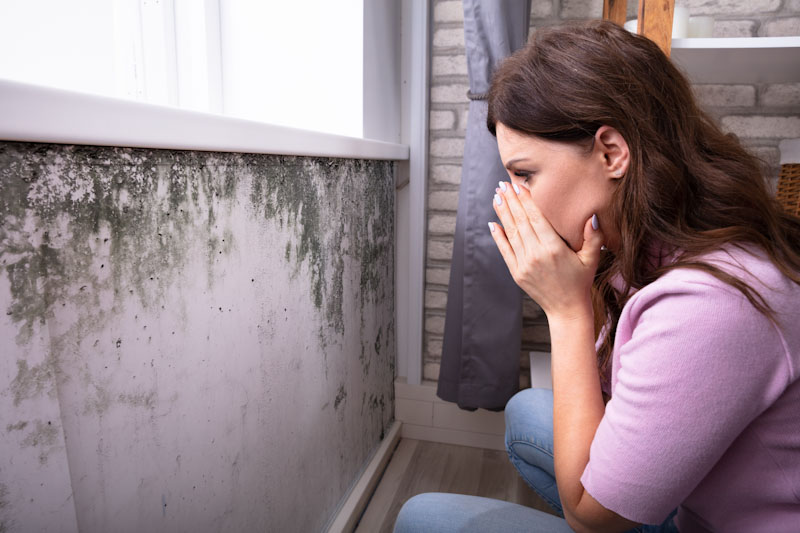
Tell the landlord about:
- What repairs are necessary.
- Any impact on your health.
- Any damage to furniture and possessions.
If you do report a mould issue to your landlord or property manager, it is important to document the issue for evidence. This includes taking pictures of the mould and keeping a log of any communications with your landlord or property manager.
Documentation will serve as evidence if the issue is not resolved and legal action becomes necessary.
Remember, as a tenant, you have the right to live in a safe and healthy environment.
By fulfilling your legal obligations and reporting any issues in a timely manner, you can help ensure that your rental property remains a safe and healthy place to live.
What preventative action can the tenant take against mould?
Lifestyle habits
Moisture is produced in your home by routine activities like cooking, taking a shower, and drying clothes. To help avoid damp:
- Cover pans when cooking to avoid excess steam.
- Close the bathroom door when in the shower, and ventilate the room.
- Dry clothes outside where you have the space and the weather to do so.
Aim to have a low background temperature in each room of at least 15 degrees.
Leave a space between your furniture and the outside walls.
Regular Cleaning and Maintenance Tips
Check that extractor fans, where fitted, are working.
Regularly clean surfaces prone to moisture, such as bathrooms and kitchens, and remove any standing water immediately.
Tenants should also regularly inspect their rental property for any signs of leaks or water damage and report any issues to their landlord immediately.
What are the landlord’s responsibilities and obligations?
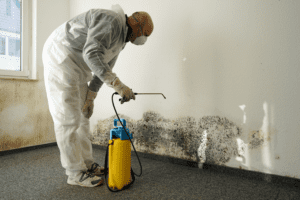
landlord’s responsibiltY for Rented Properties
It is the landlord’s legal duty to maintain a safe and habitable rental property for their tenants. This includes addressing any mould issues that arise, either through repairs or professional remediation services.
Failure to address issues in a timely manner could result in legal consequences for the landlord.
Addressing Tenant Complaints about Mould
If a tenant reports a mould issue to their landlord, the landlord must arrange an inspection and take appropriate action to resolve the problem. This may include repairing a leaking roof, improving ventilation, or hiring a professional mould remediation service.
Landlords must also take appropriate steps to ensure that the mould does not return.
Potential Legal Consequences for Negligent Landlords
If a landlord fails to address a mould issue in their rental property, they could face legal consequences. This may include fines, legal fees, and even being held liable for any health issues or damages caused by the mould.
What preventative action can a landlord take against mould?
Choosing Mould-Resistant Materials and Products
Choosing mould-resistant materials and products can also help restrict mould growth in rental properties. Landlords should look for products with anti-mould coatings, such as paint, and choose materials that are resistant to moisture, such as ceramic tiles and stainless steel.
Regular Maintenance
Most landlords will need to proactively consider:
- Removing debris from water goods e.g. gutters and down pipes to avoid damp walls.
- Unblocking drains.
- Clearing debris from a flat roof.
- Repairing a broken extractor fan.
- Repairing leaking pipes.
- Repairing a faulty heating system.
Building Works
- Replacing rotten window frames.
- Replacing missing internal doors.
- Repairing a damp proof course to block rising damp.
- Installing a damp proof course to block rising damp.
- Improving poor insulation (but consider the impact of this on older properties).
- Fixing the pointing of chimneys and outside walls.
- Repairing wall cracks.
- Repairing roof leaks.
- Remediating construction damp (caused by the design of the building).
To Sum Up
For those who have allergies or respiratory issues, damp and mould can be dangerous to their health. Infections and allergies or asthma can be made worse by mould. Additionally, irritants and poisons can be produced, which can be harmful to people. It is for these reasons that it is important to prevent mould in indoor environments.
By understanding the causes and effects of mould in rented properties, reporting any issues to your landlord, and taking appropriate steps in preventing mould growth, you can help ensure a mould-free rental property and the health and safety of yourself and your family.
Dealing with mould in rented property can be a challenge, but as a tenant, you have rights and responsibilities when it comes to addressing the issue. Check your tenancy agreement.
Remember, effective communication with your landlord and documentation of any issues are key to resolving any mould-related problems that may arise.
More Reading
See more Helpful Content
Visit our Homepage

